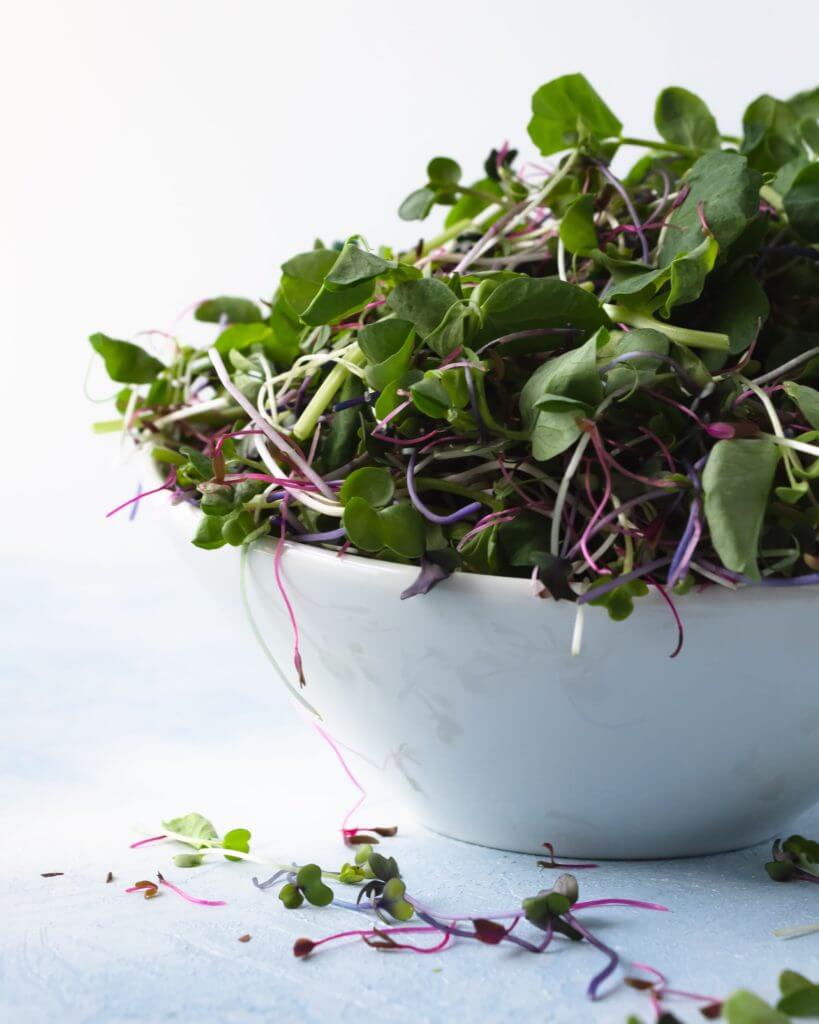There are plenty of healthy products(as they claim) in the market. Mostly accompanied by beautiful packaging and nutritional values flaming with heavy price tags that are blown up with huge shipping charges and marketing costs. Their non-availability in the local market can be another reason for their heavy prices. They aren’t only heavy on pockets, but they’re making everyone believe that eating healthy is a difficult and costly deal. But, there’s a powerful third-millennium grain: Amaranth, which has plenty of health benefits and is also available locally.
Came from a plant, eat it; was made in a plant, don’t. – Michael Pollan
Your health should be your priority and you should be ready to invest in it without any regrets. But, what if you can grow all your health partners in your backyard?
Yes! Many healthy ingredients can be grown in the backyard or can be bought from the local store.
Benefits of local grains(ancient grains) :
- Super friendly on pockets because they’re grown locally. Their prices aren’t that high when compared to other products that are flaming with other extra charges imposed on them.
- Easily available and even the closest stores have them.
- If you’re growing them on your own, you know how you’re doing it and they’ll be organic.
There are plenty of superfoods available in the market and you’ll see that the superfoods are always within the reach in any country. Their countless nutritional benefits, availability and affordable prices make them the best option when it comes to building healthy eating habits. You just have to look back to the ancient times and appreciate ancient grains. India alone has a long list of such superfoods.
But, if there are so many superfoods available locally and at affordable prices, then why aren’t many people using it?
Maybe there’s a lack of awareness about them which can be due to lack of marketing, which makes them stand backstage almost all the time. That’s why Indians are picking up other grains that are flown from over the world. And, neglecting the ones which are standing there for a long time.
India, surrounded by the Himalayas in the north and with the sea on three sides, makes it suitable for the growth of many superfoods.
A Local hero and a third millennium grain: Amaranth-
Supporting locally grown food is important for farmers as well as for our health.

This local hero is known by different names:
Rajgira(king seed), Chaulai, Red spinach, Ramdana(seed sent by God) or Varti chawal, Royal grain, the golden grain of the Gods, .etc.
Different types of Amaranth are found in India :
- Amaranthus caudatus (love lies bleeding)
- Amaranthus cruentus
- Amaranthus hypochondriacus (Prince of Wales Feather and it is originated in Mexico but can be seen throughout the Himalayas).
- Amaranthus paniculatus (Autumn palette)
- Amaranthus spinosus(prickly amaranthus and spiky amaranthus)
- Amaranthus tricolor(yellow, green, and red as the name suggests)
- Amaranthus viridis (green amaranth and slender amaranth, this is commonly found in India)
Let’s explore the greatness of this royal grain:
Amaranth visits Asia:
A forgotten hero and a third-millennium grain is believed to have originated in India came originally from South- America. And, then migrated to Asia ( thanks to globalization). Though, its migration is still a riddle. We are blessed to find it though. Today it is an integral part of almost all the diets and the non-irrigated land is dedicated to its growth.
Where can you find it?
Amaranth is grown almost everywhere in India starting from the Himalayas in the north, plains of central and southern India, coastlines of the west, east, and south. This makes them available in every corner of our country. And, their availability makes them two to three times cheaper than the one which comes with flaming prices.
You can grow them in your backyard. How?
Amaranth or Rajgira is a part of the diet of people across the world from Mexico to Russia.
- The crop requires very less water and Nonetheless, its flexibility licenses it to fill in a range of atmospheres, from the high heights of the north to the hot, sticky states of the south. Amaranth is brief, yet parts of the plant are accessible all year. Varieties of amaranth leaves are present in the market.
- And, you get both- a leafy vegetable and grain. Thus, you can use them in different ways while cooking. These powerful amaranth leaves come in all sizes-large or small.
- They are organic as you can grow them without any pesticides and chemical fertilizers.
How can you incorporate Amaranth into your diet?
The Amaranth plant can be integrated into your diet in three forms – oil, seed(grain), and leaf.
Their availability in three forms makes them easy to use. You can choose any of the forms according to your taste, preference, and mode of cooking.
It can even fit your diet while fasting because of its great nutritional value. It is easy to digest and also acts as an energy booster. Thus, this power-packed food provides many benefits with minimum efforts.
A tasty touch of Amaranth:
Healthy eating isn’t boring, you’re just doing it wrong.
The most important thing which you need to live a healthy life is a balanced diet and exercise. You can exercise for hours, but if you’re not aware of what you’re putting inside your body, then it’s of no use. Many people complain about healthy food being boring and tasteless, however, this is not the case at all.
This tiny power-packed royal grain – amaranth labeled as grain is a seed. It is as small as sesame seeds and looks like quinoa. They have a yellowish color and can be used as a seed or ground into flour,
They have a sweet nutty flavor and are crunchy in texture. The leafy part of the plant is edible and tastes sweet. You can make them as you like and give your flavors.
Amaranth as a seed(grain): It is cooked just like rice and you can enhance its taste by adding your favorite ingredients. Its nutritional value is enhanced when sprouted and can be added to salads.:)
Amaranth as a flour: Ground them into flour and it’s ready to use. Amaranth is a blessing for individuals with gluten sensitivity. You can use them to make roti (chapati or flatbread), bread. Flour mixes, porridge, cookies, cakes, muffins, pancakes, etc. Amaranth is the best substitute for maida (refined flour) and will help you bake healthy and tasty stuff. Bake healthy! 😀
Amaranth as a vegetable: The leafy part can be fried or boiled just like other green leafy vegetables. Give your touch while cooking and enjoy it. 😛 🙂

Blessing for the overall health – Nutritional benefits:
Amaranth has been attributed to a rank of “third-millennium grain”. Let’s explore, why?
- It has a good amount of protein which makes it the superior choice of weight watchers. Build muscle, lose weight, or gain weight- Amaranth or rajgira will always help you. It is indeed a Royal grain.
- Better than other grains like wheat, rice, and corn that are low in lysine which can help in reducing anxiety, treating cold sores, increasing calcium absorption, etc. Amaranth is a perfect blend of essential amino acids and a complete source of protein among others.
- Amaranth is one of the best sources of calcium, magnesium, zinc, iron, and Vitamins- A, B, K, and C.
- It is easy to digest and has antioxidant properties.
- Amaranth has a good amount of calcium and therefore helps in strengthening the bones. Also, reduces the risk of developing osteoporosis and helps in muscle regeneration.
- Vitamin C content on Amaranth can help in boosting immunity and helps the body to produce collagen which improves skin, increases muscle mass, and relieves joint pain.
- The leafy green part of the plant is a complete package of minerals, vitamins, and other essential nutrients. When boiled with water it can cure sore throat and reduces acne.
- It is gluten-free and can be consumed while fasting also.
- However, the amaranth (Rajgira) has a high glycemic index(GI), so it gets rapidly digested.
Final Verdict:
Amaranth has plenty of health benefits and India has the highest diversity of amaranth in the world. We get it in black, pink, red and white. It is easily available and can be grown or cooked by anyone easily. We must protect this highly nutritious food and spread awareness about it. Instead of looking far for superfoods, we should look in our locality. It’s all about our awareness and how much we value our local food. It’s a great opportunity to look back to farms and the local market.

Spread the awareness and let the best reach the maximum!
Get #vocalforlocal. 🙂




9 Comments
Sagar
October 19, 2020 at 12:44 amGud content 🙌
Vandana Sharma
October 25, 2020 at 11:33 amThankyou!
Vandana Sharma
December 2, 2020 at 8:53 pmGlad you liked it 😄
Surbhi Prapanna
February 13, 2022 at 12:40 amWhat a co-incidence, I have also written similar kind of post in past on Amaranth grain. Indeed, it is an amazing grain with multiple health benefits. I love to make amaranth paratha at my place very often.
Anjali Tripathi
February 14, 2022 at 12:06 amI used to hate it as a child, but now that I am a mother, I enjoy eating it and want to feed it to our children because of the health benefits. Informative post.
Jeannine
February 14, 2022 at 5:29 amLovely article. I’ve been having hives this past few weeks and the only thing I can think of is because of my food intake which I need to change. This would be really helpful.
Manisha Garg
February 14, 2022 at 11:44 amThis was a very informative post. I wasn’t familiar with so many health benefits of Amaranth, I will surely try to incorporate into our meals.
Preety tiwari
February 14, 2022 at 11:56 amI heard a lot about Amaranth but was really unaware about its facts and benefits. I would surely love to include this in my diet and surely gonna watch some recipes too.
Aiysha Khan
February 14, 2022 at 12:19 pmLoved the article. Also thus topic Is an important topic for botany students.. I’ll ve sharing it with my friends too for depth info